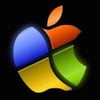If you are starting your journey into the world of web development, congratulations! This is an exciting and constantly evolving field, full of opportunities. In this guide, we will explore the first steps you need to take to become a web developer. We'll cover the basics of HTML, CSS, and JavaScript, discuss recommended resources and tools, and suggest some simple projects for you to practice.
1. HTML: The Structure of the Web
HTML (HyperText Markup Language) is the markup language used to create the structure of web pages. Think of HTML as the skeleton of your page. Here are the main elements you need to know:
Tags: Tags are used to define different types of content. For example, "h1" defines a main heading, "p" defines a paragraph, and "a" defines a link.
Attributes: Tags can have attributes that provide additional information. For example, the href attribute in an "a" tag defines the link's destination.
Basic HTML Example:
html
Copiar código
<!DOCTYPE html>
<html lang="en">
<head>
<meta charset="UTF-8">
<meta name="viewport" content="width=device-width, initial-scale=1.0">
<title>My First Page</title>
</head>
<body>
<h1>Welcome to Web Development!</h1>
<p>This is an example paragraph.</p>
<a href="https://example.com">Click here to learn more</a>
</body>
</html>
2. CSS: Styling Your Pages
CSS (Cascading Style Sheets) is the language used to describe the presentation of an HTML document. With CSS, you can control the appearance of your pages, including colors, fonts, spacing, and layout.
Selectors: Selectors are used to "select" the HTML elements you want to style. For example, h1 selects all "h1" headings, while .class selects all elements with the specified class.
Properties and Values: Properties define what you want to style (such as color or font-size), and values specify how you want to style it.
Basic CSS Example:
css
Copiar código
body {
font-family: Arial, sans-serif;
margin: 20px;
}
h1 {
color: blue;
}
p {
font-size: 16px;
line-height: 1.5;
}
3. JavaScript: Adding Interactivity
JavaScript is the programming language used to add interactivity to your web pages. With JavaScript, you can create dynamic functionalities, such as interactive forms, simple games, and much more.
Variables: Variables store data that can be used and manipulated throughout your code.
Functions: Functions are reusable blocks of code that perform a specific task.
Events: Events allow you to respond to user interactions, such as button clicks or mouse movements.
Basic JavaScript Example:
javascript
Copiar código
document.addEventListener('DOMContentLoaded', function() {
const button = document.querySelector('button');
button.addEventListener('click', function() {
alert('You clicked the button!');
});
});
Recommended Resources and Tools
To help you on your learning journey, here are some resources and tools we recommend:
Code Editors: VS Code, Sublime Text, Atom
Online Courses: freeCodeCamp, Codecademy, Udemy
Communities: Stack Overflow, GitHub, dev.to
Simple Projects to Practice
There's nothing better than practice to solidify your learning. Here are some simple projects you can try:
Personal Profile Page: Create a page with a brief bio, photo, and links to your social media.
To-Do List: Develop an interactive to-do list where you can add, mark as completed, and remove tasks.
Memory Game: Create a simple game where the user has to find matching pairs of cards.
Conclusion
Web development is a vast and rewarding field. By mastering HTML, CSS, and JavaScript, you'll be well on your way to creating amazing web pages. Remember to practice regularly, explore new resources, and participate in developer communities. Good luck and have fun coding!







Top comments (0)